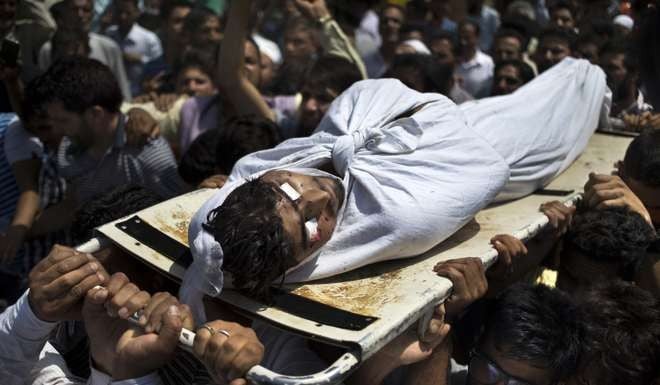
Pellet guns blind too many protesters, so India seeks a new 'non-lethal' weapon
India examines new irritants including chili-pepper shells, cannons that fire water slugs and rubber-nosed plastic shells that can be used in place of the damaging lead pellets that have caused hundreds of injuries in Kashmir
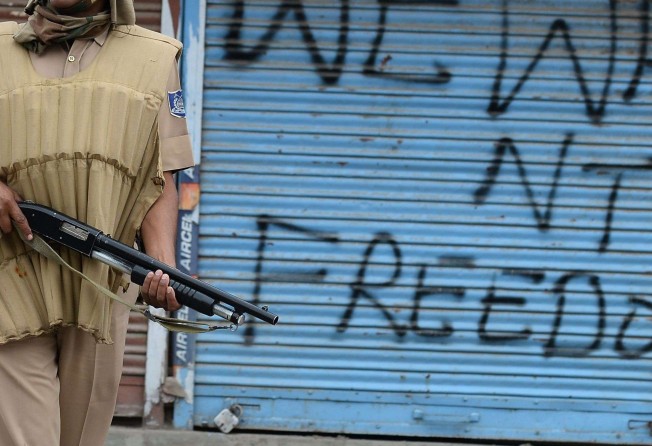
In eight weeks of violent clashes that ripped through India’s strife-torn Kashmir province, the national spotlight has been on the millions of tiny lead pellets fired by the police on protesters, blinding dozens and injuring hundreds more.
Amid growing public outcry, criticism from human rights groups and calls for a ban on pellet guns, the Indian government is now looking for a new non-lethal weapon that can temporarily incapacitate violent mobs without causing permanent damage. On Monday, a security official said that the use of pellet guns will be regulated and used only in extreme situations in the future.
A seven-member panel set up by the ministry of home affairs is now examining a string of new irritants including chili-pepper shells, cannons that fire water slugs and rubber-nosed plastic shells that can be used in place of the damaging lead pellets.

Calling the pellet gun non-lethal is a dangerous fallacy
New Delhi’s search for new, less lethal weapons illustrates a key challenge that Prime Minister Narendra Modi’s government faces - to be tough in tackling angry mobs in Kashmir without inflaming the anger even more, and at the same time, as a senior security officer said, inviting the wrath of human rights activists.
Responding to criticism, Ram Madhav, a senior member of the ruling Bharatiya Janata Party, said last month that the use of non-lethal weapons in Kashmir did not mean “we were going to shower flower petals on people.”
Police have struggled to quell the angry rock-throwing demonstrators in the Muslim-majority state of Kashmir since early July, when the death of a popular young militant commander sparked days of riots and left over 70 dead, according to media reports.
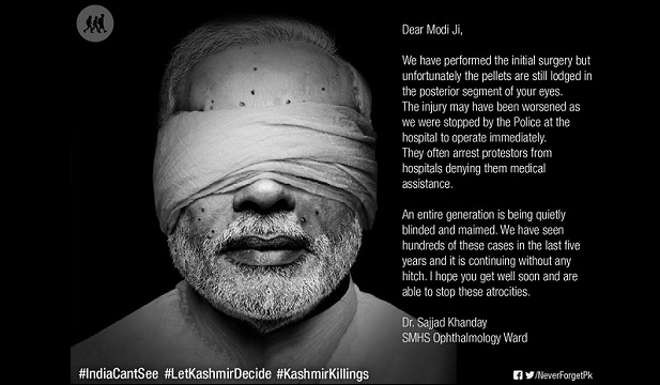
Security forces fired more than 1.3 million pellets in the first 32 days to control street protests. Hospitals were overwhelmed with patients with pellet gun injuries. Images of teenagers with eye injuries and pellet-dotted bodies flooded social media and newspapers.
Pellet guns have caused over 500 eye injuries in Kashmir in the recent weeks; about 100 people have been permanently blinded. Overall, 8,500 people have been wounded in the protests, and of those 3,800 were hit by lead pellets.
The widespread use of the supposedly non-lethal pellets has been widely condemned. They have been used to contain uprisings in the Middle East but elsewhere police rarely turn to them. Human Rights Watch called for an investigation on whether disproportionate force was used in recent weeks in Kashmir.
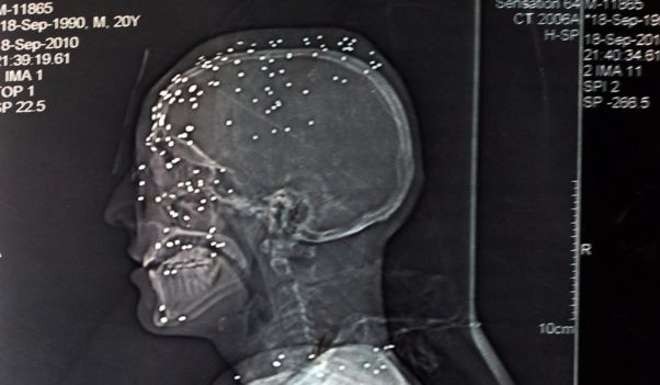
“The pellet guns have been a horrific nightmare. Calling the pellet gun non-lethal is a dangerous fallacy,” said Nisar ul Hassan, the president of the Doctors Association Kashmir. “Even after the surgeries, we cannot remove all the pellets from the bodies. They are like ticking time bombs inside a person.”
Pellet guns were introduced after a similar face-off in 2010 between stone-throwing protesters and police. At that time they were hailed as an “accepted weapon of riot control,” said the paramilitary Central Reserve Police Force in a Kashmir court earlier this month. If they are now withdrawn, the officers warned, the force would have “no recourse in extreme situations but to open fire with rifles, which may cause more fatalities.”
The new pellets used this year have sharper edges, Hassan said.
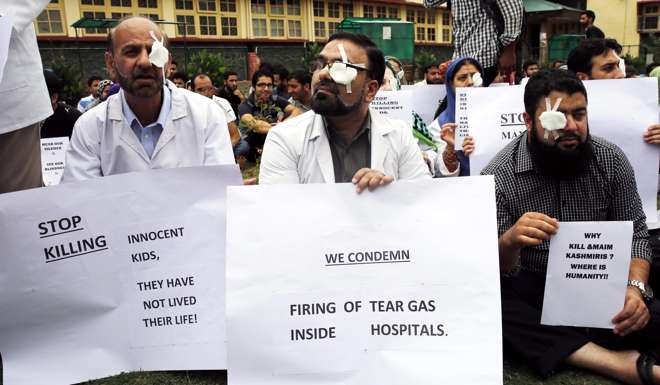
Some officers on the ground in Kashmir say pellet guns are the most effective tool in their hands, and one security official said pellet shots help them identify “troublemakers” when the wounded check into the hospital for treatment.
“There is an orchestrated campaign against pellet guns precisely because it is doing the work of effectively controlling the violent mob protests,” said a senior security official in Kashmir, who asked not to be identified because the matter is still under review.
“When there is a determined militant crowd hurling sharp stones at us and [they] break our helmets, shields and bones, then we need to act. Tear gas shells are not very effective because protesters use wet cloth to cover their eyes and are back in action in two minutes.”
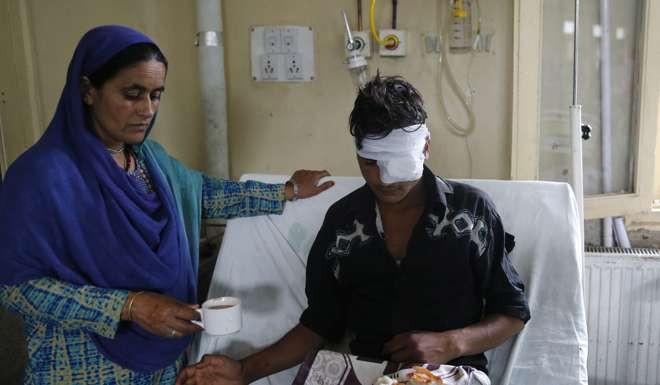
The government is now considering equipping police in Kashmir with body cameras that will capture images of stone throwers in the mob.
Last week, India’s Border Security Force demonstrated to the media their proposed alternative to pellet guns - chilli-pepper-filled shells, which contain a chemical irritant found in natural chilli but stronger than pepper, and more pungent than tear gas. The shells can be fired from rifles and pump-action guns and can also be fitted to police vehicles.
Such shells, officials said, have been used by U.N. peacekeeping forces to control crowds abroad. In India, they have been used in anti-terror operations a few times. Police around the world use an array of less lethal weapons like stink grenades, stun guns and pepper-balls.
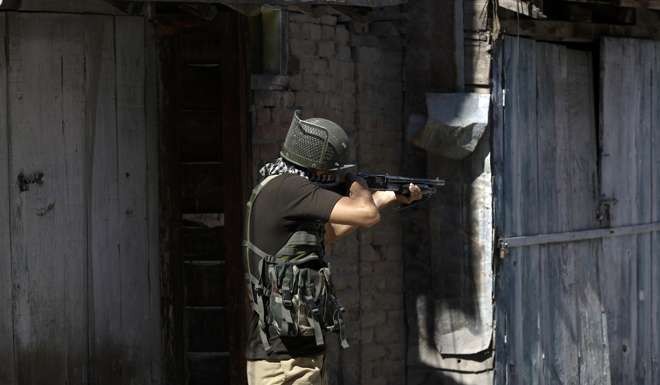
Meanwhile, many pellet gun victims in Kashmir say that the government’s new measures may have come too late.
Firdaus Ahmad Dar, 25-year-old auto-rickshaw driver in Mazbugh village in Kashmir, said he was shot at when he was on his way to buy vegetables one morning in July.
“The pellets hit my head, chest and eyes. Everything is over, I thought,” Dar recalled.
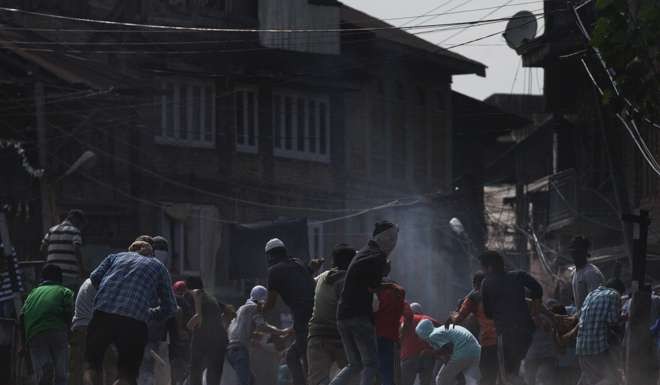
After his injury, he spent almost a month in the hospital and had two eye surgeries. Yet doctors say there may still be some pellets left inside him that can enter the bloodstream and damage vital organs over time.
“I am the sole wage earner in the family. There is now zero sight in my right eye and I can barely see some blob of light in the left eye. But I can’t make out what is going on around me,” Dar said. “Even if they change the policy now, I don’t benefit. My life is shattered.”